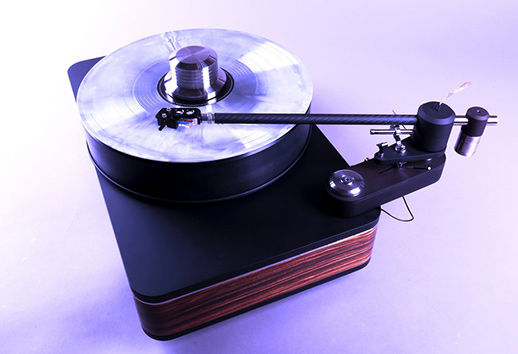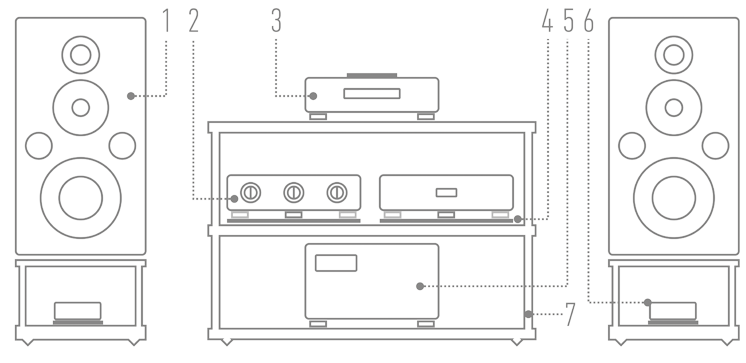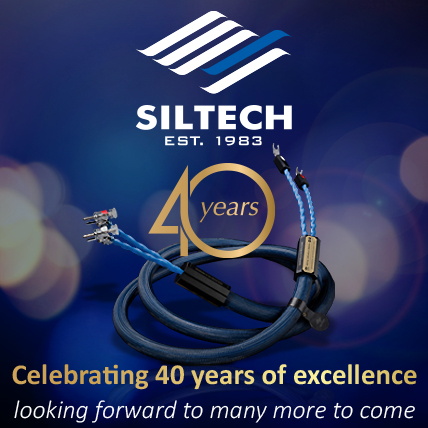|
Turntable: drive + tonearm BennyAudio
Manufacturer: BENNYAUDIO |


|

|
„The electric turntable - as most devices - is not devoid of structural defects. Some of them can be removed completely by introducing improvements or compensating mechanisms. The effects of others can only be weakened. The correct, even meticulous usage of such a precise mechanism as the modern electric turntable is also an important factor.” 
At the time Mr. Witord was writing these words, there were still two names used for a RECORD PLAYER in Poland - the proper one - turntable and the 'ADAPTER'. Although the latter was also used to describe a cartridge... Times changed, so did the language, but what I cited at the beginning is equally true today. That is why we still perceive a turntable as a complicated electro-mechanical device with special qualities, including some deficiencies. And, as at the beginning of the hi-fi era, that is, since the end of the World War II, also today, the task of any designer is to utilize the former and minimize the latter. Due to the need to combine knowledge from several different fields, turntables have always been seen as a task for the "aristocrats" of the audio world. And yet, if we think about it for a moment, we will come to the conclusion that a turntable is a fairly simple system. It's: a base with a motor, tonearm and phono cartridge. There is also a phono preamplifier but it’s an external device. If we assume that the cartridges and preamplifiers are a separate field of knowledge, it is enough to rotate a record with accurate speed and hang the cartridge so that it operates in optimal conditions. The reality turns out to be much more complicated, which is why there are not that many audio manufacturers who offer good, high quality turntables and just any 'turntables'. However, it so happens that Polish Fonica has for years been considered one of the most interesting manufacturers of entry level and mid-price-range turntables. After 1989, that is after the political change in Poland, everything "crumbled down" and one could get the impression that it this part of the industry is gone for good (more in: Subjective history of Polish turntables), and that no valuable turntable would ever be developed in Poland again. In the early 2000s, however, something changed. A lot of good and even excellent Polish companies specializing in turntables and related products emerged and ever since many new ones were founded here. One of the latest that is just entering the world of audio is BennyAudio, a company run by Mr. Tomasz Franielczyk.  TOMEK FRANIELCZYK 
Over two years ago, after replacing the first "serious" stereo system, it turned out that my trusted turntable also required a successor. I could buy something new and believe it would be okay or ... Well - I started to wonder, were there any other options? I thought that somebody makes all those turntables, why shouldn't I try it too? I treated this venture as a project - after all project management (in IT) is my profession. I planned the development process in such a way, to be able to verify early enough whether there would be a chance of success - without undue material and moral losses. 
The very first tonearm – Feb. 23rd 2018. Photo from TF’s archive I started with tonearm. After several months of testing, a 14-inch monster was developed armed with the Audio-Technica AT440 MLB cartridge, and I used an old, simple Pro-Ject turntable for testing. It looked comical, but it sounded so good that I got rid of all doubts, and the work spun for good. After a year and a half and five versions of the design, I dared to present my work to Krzysztof Majchrzak from the Media-Hit showroom. He immediately proposed that I present the turntable during the cyclical meeting "Good evening with a vinyl record" organized jointly by Vinylhouse (Bogusław Ziębowicz) and Media-Hit at the Spirala club in Gliwice. 
Version no. 2. – June 14th 2018. Triangular plinth made of silicone interleaved plywood. External motor of his own concept. Platter and bearing - spare parts for Rega. Photo from TF’s archive I remember it like it was yesterday - it was a Friday evening on April 26th 2019, dedicated to the YES band. I was really nervous for the whole 4 hours. In my head I saw a turntable breakdown causing the whole stage to catch fire, all the more so because the music from YES did not soothe the nerves. Fortunately, there was no failure, and the opinions of participants encouraged me to prepare a commercial version - since I already knew what and how to do, why not make turntables for other people? And here the real struggle began, because a DIY component made for oneself is something totally different than a commercial product, as I soon found out. Some time passed and in September 2019 I could finally present to the world three units of my first turntable, the T1 model. One of them regularly "goes" to Vinylhouse meetings, and the other two play from time to time during the evening events organized by the Media-Hit shop. All the meetings and opinions people shared with me resulted in introduction of several improvements and changes to the project. In March, a "civil" version was created - technically a twin, but after a slight visual facelift. Today I can say it with certainty that the BennyAudio turntable is what I dreamed about. I devoted every spare moment to it, read a lot of articles, looked through thousands of photos, spent hundreds of hours in the workshop. I made many right and some wrong decisions, and above all I significantly exceeded the budget.Would I, knowing what I do today, do it again? Sure I would :) ♦ | IMMERSION BennyAudio is particularly interesting because it offers both a turntable base or drive and a tonearm. Even such big companies as the German Transrotor, or the English Avid, for many years they did not make their own tonearms, but used ones made by other brands (Rega, SME, Jelco). The case of this Polish company is more like what we know from the history of SME, another British specialist who for a long time offered ONLY arms, and turntables came later. The difference is that BennyAudio developed both components simultaneously, before releasing any product to the market. Mr. Tomasz is a perfectionist. Such people don’t have it easy because nothing is ever good enough for them and there is always something to improve. But if they decide to introduce a finished product, we can be sure that it is of the highest quality. And the IMMERSION turntable is just that - refined in every detail. This is a completely "finished" and refined product that looks as if it was prepared by one of the big specialists - SME or Clearaudio. Drive | The tested turntable is a non-decoupled, mass-loader. Its base in the main part is made of beech plywood, hot glued under pressure and cut out with a water jet. The upper part is reinforced with 3 mm thick stainless steel, covered with a 2 mm layer of vibration damping micro-rubber. The base is closed from above and below, also with 10 mm thick aluminum cut. The sides are veneered and varnished, and the top and bottom are black anodized. A large, solid platter catches the eye. It is hand-rolled from a material called polyacetal C (POM-C). It is a thermoplastic material with high mechanical strength and high heat resistance. Because it has good anti-friction and mechanical properties - internal damping - it is often used in audio applications. We’ve seen it in products of such companies as: Transrotor, Dr. Feickert Analogue, Holbo and others. The platter in the tested turntable is massive and solid - it is 65 mm thick. The hydrodynamic, inverted bearing on which the platter spins was constructed by Mr. Tomasz. The tungsten carbide ball provides support between two elements - a steel, hardened stem and a Teflon washer. The torque is transferred from a pulley mounted on the axis of the engine, that is made according to his own design in one of the Chinese companies. There are three recesses on the circumference of the pulley. They allow user to easily set the height of the belt. Motor | The motor is mounted in the base and carefully separated from it using Sorbotane. As Mr. Tomasz said, this is not one of many popular turntable motors, and the meaning is it’s a more robust and "quieter", brush-less, industrial DC motor with considerable torque. It is powered by a cascade control system, with several circuits that "supervise" each other. Speed fine-tuning automatically occurs every few revolutions with an accuracy of 12 bits (4096 accuracy positions, which corresponds to a voltage change of 0.8 mV). A digital reflection sensor and driver with proprietary software were used for this purpose. The optical tracking system was located in the base, under the platter, and the tape was placed on the platter itself. Switching between 33.33 and 45 r.p.m. speeds is executed with a push of a button. One turns on the rotation with one button and changes it with the other - both are highlighted. I only wish a different backlight color would differentiate 45 rpm. Start and stop are smooth and easy - the control has been programmed so that the belt is subjected the the least force possible. The motor is powered by an external, regulated 24 V DC power supply. The set includes a very good PS made by the Polish company Tomanek. 
Tonearm | I was very curious about the history of the tonearm development. The beginnings were quite simple - Mr Tomasz made the first prototype tube from balsa wood, in which he drilled a hole for cables. |
It was cut at the end in a characteristic way and moved on the stem - it was a unipivot arm. After many experiments, mainly with tube damping and horizontal movement damping, an arm was created that is currently available with both the T1 and the tested model. It’s a unipivot 12.5-inch long tonearm with following features:
The tonearm can be adjusted in any plane, but the setup is not easy, which is not strange considering this type of design. The counterweight, with a very low center of gravity, moves freely on a steel spindle and is fixed with an Allen screw. We also tighten the arm boom with an Allen key. It would be a good idea to add some scale to make it easier to set the pivot to spindle distance. A similar scale would make life easier when setting the VTA. According to the manufacturer, the effective mass of the arm with a cartridge weighing 8 g is around 16 g, so it is designed for cartridges with medium dynamic compliance. | HOW WE LISTENED TO IT The BennyAudio Immersion turntable was tested in the „High Fidelity” reference system. It was connected to the RCM AUDIO SENSOR PRELUDE IC → the using the RCA Crystal Cable Absolute Dream IC to → Ayon Audio Spheris III → with another RCA Acoustic Revive Absolute IC to → Soulution 710 power amplifier → and using Siltech Triple Crown speaker cables to → Harbeth M40.1 speakers. 
During the test I used following cartridges: Ortofon 2M Black (MM), Denon DL-103 (MC) and Miyajima Laboratory Madake (MC), as well as another phonostage, the Fezz Audio Gratia. Let me add that I placed the Nordost QPoint on top of the phonostage, and the signal from turntable to phonostage was sent using Amplifier Surgery interconnects, that the manufacturer had used while developing and testing his turntable.  Recordings used for the test (a selec- tion)
Mass-loaders, such as the tested BennyAudio, for many years differed from decoupled turntables, such as Linn Sondek LP12, in the approach to the sound reproduction, to its structure. It was not about small things, but about the basics. They offered focus, mass, precision, high dynamics and low, well-controlled bass. In addition to the advantages I’ve mentioned, mass turntables often - not "very often" but "often enough" - had some features that were not acceptable to everyone. Such as: squashed dynamics, a slight "deadness" of the presentation and not entirely satisfactory tonal diversity. On the other hand, the decoupled record players were masters in building the atmosphere, thanks to the perfect midrange - fluid, dense and warm rather than neutral. Both of these approaches were (and always will be) wrong. Comparing the sound of a LP with the "master" tape, playing vinyls on any turntable of any type from before - let's say - ten years ago, we will come quickly to the conclusion that these are just coloration. But that;s the way it is. Audio is not a zero-one game, but a sum of choices, each of which leads us a step closer to the sound that seduces us. It will not be an absolute truth, but "our" truth. For some time, however, I have been observing the blurring of differences between these two types of turntables and this is largely due to the efforts0 of manufacturers of mass-loaders. Such as BennyAudio. Because here, with the Immersion model, we get a sound that some time ago we would have qualified as the sound of a decoupled design. But not only that. We also get the dynamics and bass that one could only dream about with decoupled turntables. It offers a focused, dense and internally complex sound. It is not particularly resolving or detailed, but everything is done so that it may be even an advantage. As if the pros and cons were balanced, and taking into account the price of the turntable, the price of the cartridges it will most likely work with, the solutions that were chosen can support each other and do not fight with each other. Take bass for example. It's incredibly dense, goes very low and has a lot of weight. And it's really well controlled. As I noticed, most HF guests who listen to my system for the first time are surprised by this aspect of its performance. Mr. Tomasz's turntable sounded exceptionally good in this respect, inscribing into this philosophy of sound. That's how expensive massloaders usually sound like in my system. And by saying 'expensive' I mean really expensive ones. Wintersun from Brandan Perry’s Ark a classic track for assessing bass performance, sounded very good due to the depth and dynamics. The key is usually the moment when the bass fades and the vocals appear, against the background of a huge space. The Immersion turntable conveyed it perfectly, smoothly switching from mass, pressure to atmosphere and "air". Anyway, this special property, consisting of a combination of very good bass control and its great timbre and vividness, will also be felt with acoustic material. That's why the Isoo Fukui’s double bass from the Midnight Sugar by Tsuyoshi Yamamoto Trio had a very good attack, density and contours. The same record showed another feature of the tested turntable. This is one of the best piano recordings I know. BennyAudio played it outstandingly in terms of sonority, attack, but also richness of the sound. It was a unique experience, because on the one hand there was a proper precision and on the other hand the atmosphere of the recording. What I want to say is that I did not happen that the tested turntable sounded "technically". Which is partially a result of slightly emphasized upper bass and saturated midrange. | Cartridges Unique designs, and the proprietary 12.5-inch tonearm is just that, require time to find the proper cartridge match. The 2M Black model by Ortofon chosen by Mr. Tomasz is a very good starting point, but only that. The turntable wit it is able to show most of its advantages, it offers great bass, nice, not exaggerated treble, also overall good dynamics. The limitations of this setup are: unified micro-dynamics and not so great resolution. Skipping to the other end of potential cartridge partners, with the Miyajima Laboratory Madake cartridge, the sound was much more resolving, "refined", internally complex and simply beautiful. But this was not what I would expect from this cartridge and what I know it presents with other turntables. Apparently, its combination with the BennyAudio’s tonearm smooths transients and slightly "stiffens" the sound, which we don't want. It could be assumed that this is an issue of compliance - Ortofon has a high (22 µm / mN), and Madake relatively low (9 µm / mN / 10 Hz) compliance. However, when I listened to the tested turntable armed with the Denon DL-103 cartridge, which is a representative of a design category with really low compliance (5 µm / mN / 100 Hz), the sound "clicked". It's an inexpensive pickup with an unsophisticated stylus, but, man, the sound was just amazingly good! It only proves that one should treat the compliance values declared by manufacturers with caution. They are not very reliable. In addition, they are given at different frequencies, which makes the comparison even more difficult. Therefore, they must be treated as a starting point, but then self verifying auditions are required. With the BennyAudio Immersion I would try the Denon first, but I believe products of the Japanese Hana and American Shelter, not necessarily the most expensive models, will be a good fit too. | Denon DL-103 So once I found the best match I kept listening with Denon for the rest of the review. I know it from sessions with dozens of turntables, if not more, and I know that the theory regarding the arms it should work with completely do not coincide with what actually works in a real life. For example, it sounds great on Rega and Pro-Ject's light tonearm, though it shouldn't. It is not an extremely resolving cartridge, but what it does - it does great. And with Immersion it sounded great. There was a great tonal balance, deep, well-controlled bass and beautiful stereo imaging. The bass does not go as low as with TechDAS turntables but there was nothing to really complain about. Once again it turned out that this turntable is capable of greatly differentiate recordings, but it does it in its own way. For example, when I listened to the first European pressing of the Offramp by Pat Metheny Group and compared it with the first Japanese pressing (although in the "promo" version), I heard the same thing as with more expensive turntables, namely that the Japanese version is more „muffled”, smoothed out and not as rich in the bass area. But it was not "dragged" out to the light, so to speak, by the turntable. He tried above all to show the Japanese version in the best way and only then added what is better in the German version. And this is probably one of the most important features of this design and this setup, because I heard almost exactly the same thing when comparing records pressed from analog master tapes and digital files. The former are almost always more dynamically and tonally open, they are also more spacious, they go more deeply into the sound. BennyAudio showed it well, but did not punish "digital" discs with excessive emphasis on the treble or the midrange. Even with such a "strong" sound, as with the Happy (From Despicable Me 2 by Pharrell Williams. And if the digital discs are well made, like Memento by the RGG group, which was released as part of the Polish Jazz series under the number '81', they will sound fantastic with Immersion. | SUMMARY The reviewed turntable is made equally well, maybe even better than many foreign competitors. It also looks great. One could still improve some elements, but it's more about making life easier for the user, not about aesthetics or performance. It's a finished, impressive product. 
Its sound combines the low, well-controlled bass of a mass-loader, although with a raised upper range, with a refined, dense midrange. The treble is slightly less differentiated, but it never bothers listeners nor irritates them - it is a good compromise. The thing we get with it, which makes us listen to the each next album with interest, is dynamics. It is unique. The musicians are shown in the right proportions and without throwing them "on listener’s face". The depth of the stage is good, and the foreground is always the most important thing. On the other hand, all layers of the soundstage are very vivid and well-differentiated, this is not a "flat" perspective. What else could say – maybe just that I liked this turntable o lot. ■ |

|
Reference system 2018 |
|
 1) Loudspeakers: HARBETH M40.1 |REVIEW| 2) Line preamplifier: AYON AUDIO Spheris III Linestage |REVIEW| 3) Super Audio CD Player: AYON AUDIO CD-35 HF Edition No. 01/50 |REVIEW| 4) Stands (loudspeakers): ACOUSTIC REVIVE (custom) |ABOUT| 5) Power amplifier: SOULUTION 710 6) Loudspeaker filter: SPEC REAL-SOUND PROCESSOR RSP-AZ9EX (prototype) |REVIEW| 7) Hi-Fi rack: FINITE ELEMENTE Pagode Edition |ABOUT| |
|

|
Cables Analog interconnect SACD Player - Line preamplifier: SILTECH Triple Crown (1 m) |ABOUT|Analog interconnect Line preamplifier - Power amplifier: ACOUSTIC REVIVE RCA-1.0 Absolute-FM (1 m) |REVIEW| Speaker cable: SILTECH Triple Crown (2.5 m) |ABOUT| |

|
AC Power Power cable | Mains Power Distribution Block - SACD Player: SILTECH Triple CrownPower (2 m) |ARTICLE| Power cable | Mains Power Distribution Block - Line preamplifier - ACOUSTIC REVIVE Power Reference Triple-C (2 m) |REVIEW| Power cable | Mains Power Distribution Block - Power amplifier - ACROLINK Mexcel 7N-PC9500 |ARTICLE| Power cable | Power Receptacle - Mains Power Distribution Block: ACROLINK Mexcel 7N-PC9500 (2 m) |ARTICLE| Power Receptacle: Acoustic Revive RTP-4eu ULTIMATE |REVIEW| Anti-vibration platform under Acoustic Revive RTP-4eu ULTIMATE: Asura QUALITY RECOVERY SYSTEM Level 1 |REVIEW| Power Supply Conditioner: Acoustic Revive RPC-1 |REVIEW| Power Supply Conditioner: Acoustic Revive RAS-14 Triple-C |REVIEW| Passive filter EMI/RFI: VERICTUM Block |REVIEW| |

|
Anti-vibration Speaker stands: ACOUSTIC REVIVE (custom)Hi-Fi rack: FINITE ELEMENTE Pagode Edition |ABOUT| Anti-vibration platforms: ACOUSTIC REVIVE RAF-48H |ARTICLE| Isolators: |

|
Analogue Phono preamplifier: Phono cartridges:
Clamp: PATHE WINGS Titanium PW-Ti 770 | Limited Edition Record mats:
|

|
Headphones Headphone amplifier: AYON AUDIO HA-3 |REVIEW|Headphones: Headphone Cables: Forza AudioWorks NOIR HYBRID HPC |
main page | archive | contact | kts
© 2009 HighFidelity, design by PikselStudio,
projektowanie stron www: Indecity







 ’ve reached for one of the best studies on audio technologies from the times of the Polish People’s Republic:
’ve reached for one of the best studies on audio technologies from the times of the Polish People’s Republic:













